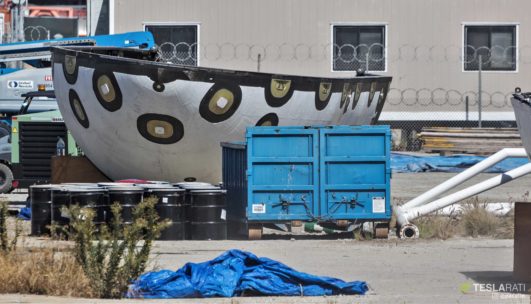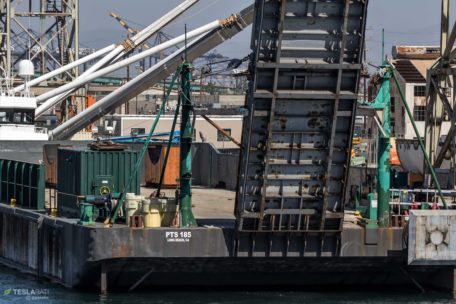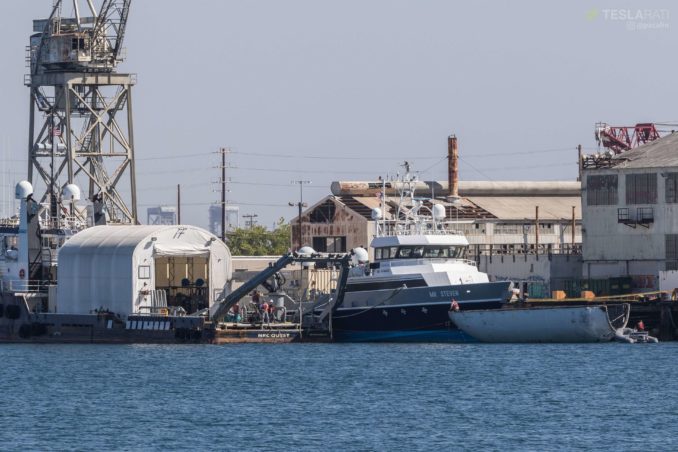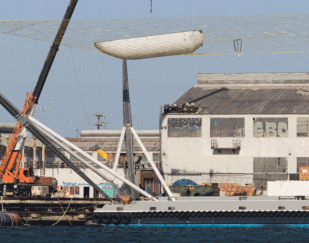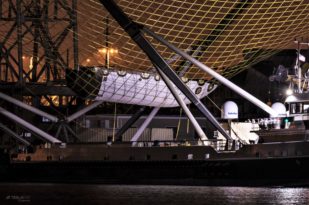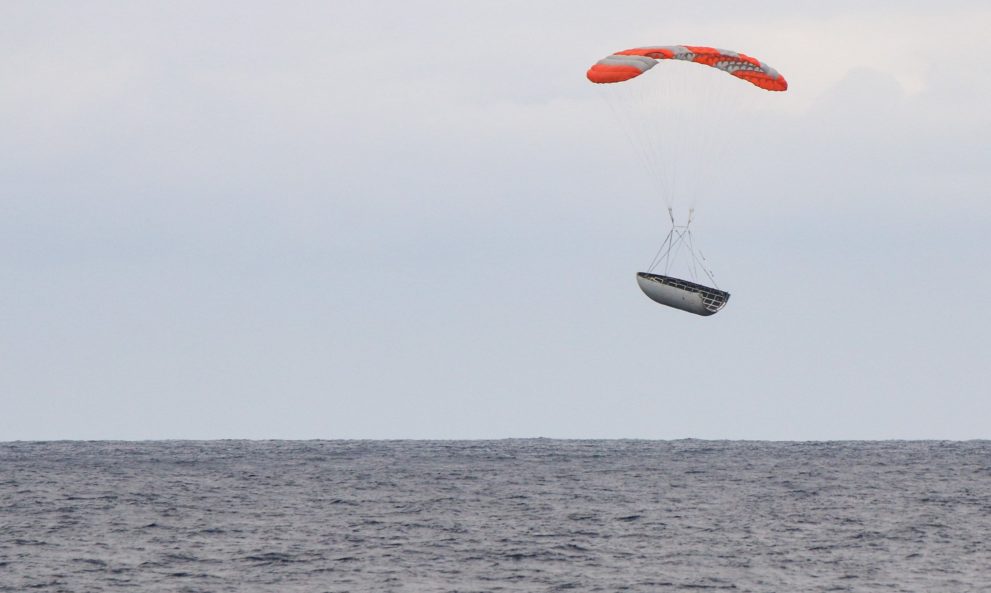
Following a few days of rest in port, SpaceX fairing recovery vessel Mr. Steven has continued a likely campaign of controlled drop tests with a second fairing recovery attempt, using a helicopter, spotter plane, and support vessel to pick up a Falcon fairing and drop it, theoretically allowing it to paraglide into Mr. Steven’s net.
While it’s nearly impossible to determine what happened without line-of-sight visual confirmation or an official announcement from SpaceX, it appears that Mr. Steven kicked off real catch attempts on October 11th, evidenced by his close interaction with a Blackhawk helicopter over the course of an hour or so. Another similar attempt occurred today, October 17th, and culminated with Mr. Steven returning once more to Port of San Pedro with the same test-focused fairing half on board, albeit not resting in his retracted net.
After October 11th’s testing was completed, Mr. Steven returned to Port of San Pedro. On October 13th, he was docked at SpaceX’s Berth 240 facilities with net lowered and the test fairing half wrapped up on the docks, preventing confirmation of whether he carried the fairing half back from the testing region. A mid-sized barge also recently appeared at Berth 240 with a distinct Falcon fairing cradle onboard, perhaps explaining the presence of a tugboat (named Sir Richard) a few miles away from where this test campaign has been stationed – a barge would offer a flat, safe surface for a helicopter to hover over and pick up an unwieldy object such as a payload fairing.
Nearly identical to the October 11th test, Mr. Steven, tug Sir Richard, a Cessna chase plane, and a Blackhawk helicopter all converged around 100 miles southwest of Port of Los Angeles around 2pm PDT on October 17th prior to beginning recovery test operations. Mr. Steven and the tug Sir Richard – likely towing a barge being temporarily used to move a fairing half – arrived several hours beforehand at the test’s planned location.
Eventually, a UH-60A Blackhawk helicopter – the same helicopter used on October 11 – lifted off from Catalina Island’s Avalon airport, taking about half an hour to reach Mr. Steven and Sir Richard. Once there, the helicopter very distinctly slowed down, eventually hovering just ~20 feet off the surface of the ocean, if not outright landing or perching on the aforementioned barge under the tug’s control. After several minutes in that state, the Blackhawk lifted off and immediately began climbing, reaching a peak of ~11,000 ft before (presumably) dropping its fairing payload and immediately diving down to follow its descent.
It’s undoubtedly an imperfect fit, but the helicopter appeared to follow Mr. Steven very closely over the course of the recovery attempt, sticking just a ~1500 ft or less above and a few hundred feet beside him as he raced to catch the falling fairing half. In fact, at least as a very rough approximation, the helicopter’s descent may be useful to judge the fairing’s behavior while gliding: taking ~14 minutes to travel descend 11,000ft and travel perhaps 2 miles (~10,500ft) horizontally, the fairing would dropped at a reasonable 13.1 feet per second (~4 m/s) once its parafoil opened and seemed to travel approximately one foot forward for every one foot down, also known as a 1:1 glide slope ratio.
And here’s a little overview of the helicopter’s path, mixed with a speed/altitude graph! Added some rough annotations to give an idea of what happened and in what time frame 😀 pic.twitter.com/e1rwZtkNHA
— Eric Ralph (@13ericralph31) October 18, 2018
Depending on wind conditions, parafoils can nominally be expected to achieve average glide slope ratios between 0 (high winds; falling like a literal rock) and 4 (no winds; almost as good as a bad airplane), meaning that Falcon fairings – judging from tangential data gathered from the helicopter following its descent – fly much like a parafoil, which is to say not great but better than a brick. The trick with parafoil control – which includes tweaking angles of attack and glide slope – lies more in the art of trading forward velocity for vertical velocity (or vice versa) at key moments. Assuming their control mechanisms have enough authority, paragliding fairings could ‘flare’ as they near Mr. Steven’s net, essentially angling upwards to briefly hover before dropping quickly, maybe giving the boat enough time to swoop in and place its net just beneath it.
In this way, a parafoil’s flexible, inflated wing (airfoil, to be precise) can allow it to maneuver quite a lot like a bird, at least more so than most other methods of flying humans have access to. Time will tell if SpaceX is having any luck perfecting the guidance and recovery of Falcon fairings, particularly with this campaign of under-the-radar drop tests. Even if Mr. Steven returns with a fairing half resting in his net, it will be more than a little ambiguous if it was placed there or he caught it, and any certainty will rely on official confirmation from SpaceX itself.
For prompt updates, on-the-ground perspectives, and unique glimpses of SpaceX’s rocket recovery fleet check out our brand new LaunchPad and LandingZone newsletters!

Top Rated Comments (view all)
Discuss: News
Top rated
Newest

